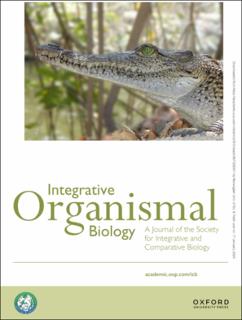Understanding Organisms Using Ecological Observatory Networks
| dc.contributor.author | Dantzer, B. | |
| dc.contributor.author | Mabry, K.E. | |
| dc.contributor.author | Bernhardt, J.R. | |
| dc.contributor.author | Cox, R.M. | |
| dc.contributor.author | Francis, C.D. | |
| dc.contributor.author | Ghalambor, Cameron | |
| dc.contributor.author | Hoke, K.L. | |
| dc.contributor.author | Jha, S. | |
| dc.contributor.author | Ketterson, E. | |
| dc.contributor.author | Levis, N.A. | |
| dc.contributor.author | McCain, K.M. | |
| dc.contributor.author | Patricelli, G.L. | |
| dc.contributor.author | Paull, S.H. | |
| dc.contributor.author | Pinter-Wollman, N. | |
| dc.contributor.author | Safran, R.J. | |
| dc.contributor.author | Schwartz, T.S. | |
| dc.contributor.author | Throop, H.L. | |
| dc.contributor.author | Zaman, L. | |
| dc.contributor.author | Martin, L.B. | |
| dc.date.accessioned | 2024-01-18T12:55:16Z | |
| dc.date.available | 2024-01-18T12:55:16Z | |
| dc.date.created | 2023-11-23T10:57:54Z | |
| dc.date.issued | 2023 | |
| dc.identifier.citation | Integrative Organismal Biology: A Journal of the Society for Integrative and Comparative Biology. 2023, 5 (1), . | en_US |
| dc.identifier.issn | 2517-4843 | |
| dc.identifier.uri | https://hdl.handle.net/11250/3112515 | |
| dc.description.abstract | Human activities are rapidly changing ecosystems around the world. These changes have widespread implications for the preservation of biodiversity, agricultural productivity, prevalence of zoonotic diseases, and sociopolitical conflict. To understand and improve the predictive capacity for these and other biological phenomena, some scientists are now relying on observatory networks, which are often composed of systems of sensors, teams of field researchers, and databases of abiotic and biotic measurements across multiple temporal and spatial scales. One well-known example is NEON, the US-based National Ecological Observatory Network. Although NEON and similar networks have informed studies of population, community, and ecosystem ecology for years, they have been minimally used by organismal biologists. NEON provides organismal biologists, in particular those interested in NEON's focal taxa, with an unprecedented opportunity to study phenomena such as range expansions, disease epidemics, invasive species colonization, macrophysiology, and other biological processes that fundamentally involve organismal variation. Here, we use NEON as an exemplar of the promise of observatory networks for understanding the causes and consequences of morphological, behavioral, molecular, and physiological variation among individual organisms. | en_US |
| dc.language.iso | eng | en_US |
| dc.publisher | Oxford University Press | en_US |
| dc.rights | Navngivelse 4.0 Internasjonal | * |
| dc.rights.uri | http://creativecommons.org/licenses/by/4.0/deed.no | * |
| dc.title | Understanding Organisms Using Ecological Observatory Networks | en_US |
| dc.title.alternative | Understanding Organisms Using Ecological Observatory Networks | en_US |
| dc.type | Peer reviewed | en_US |
| dc.type | Journal article | en_US |
| dc.description.version | publishedVersion | en_US |
| dc.source.volume | 5 | en_US |
| dc.source.journal | Integrative Organismal Biology: A Journal of the Society for Integrative and Comparative Biology | en_US |
| dc.source.issue | 1 | en_US |
| dc.identifier.doi | 10.1093/iob/obad036 | |
| dc.identifier.cristin | 2200841 | |
| cristin.ispublished | true | |
| cristin.fulltext | original | |
| cristin.qualitycode | 1 |
Files in this item
This item appears in the following Collection(s)
-
Institutt for biologi [2558]
-
Publikasjoner fra CRIStin - NTNU [37963]

